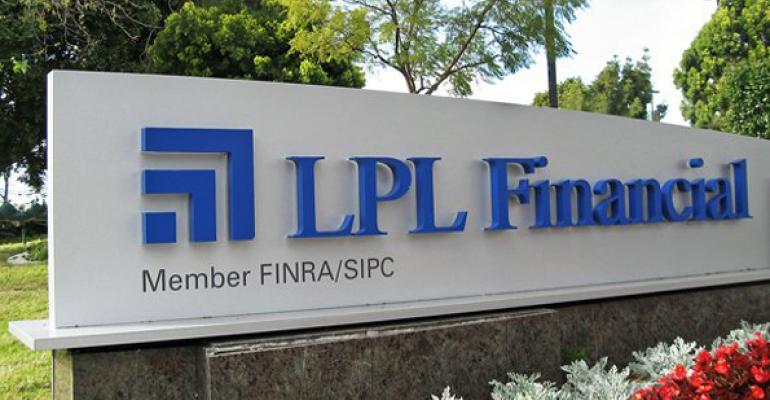LPL Financial announced two new business planning offerings for advisors at its annual Focus conference in San Diego this week, including an “end-to-end solution” designed to help them through mergers and acquisitions, from start to finish.
The second offering, CFO Solutions, will pair advisors with an LPL employee with expertise in finance and accounting to perform a diagnostic of the financial health of the business and work with the advisor to create short-term, mid-term and long-term goals to improve their practice. LPL is charging advisors a monthly subscription fee to use this service.
The end-to-end solution is currently under pilot with 15 advisors, and the firm plans a more formal launch—and an official name—by the end of the year.
When it comes to advisor M&A, a lot of the services are focused on the front end of the deal—such as getting buyers and sellers matched up, said Jeremy Holly, senior vice president of finance and capital management at LPL. But 80% or more of the deals that come through LPL are ones where advisors are already matched.
“There’s a big gap in the marketplace today to help advisors execute,” Holly said.
LPL is stringing together all the pieces involved in a given deal and giving advisors a single point of contact on one platform. What can typically take six to nine months and in some cases $50,000 to $100,000 to complete a deal now takes LPL less than 60 days and with minimal to no cost, Holly claims.
LPL helps advisors with valuation, due diligence, deal structure, contracts, deal documentation, financing (in-house) and the integration of the business once a deal is complete, which includes transitioning accounts.
The firm can even help with the legal and tax aspects of a deal, if it’s structured in one of three common ways. It includes document templates that advisors can leverage, so there’s no need for a lawyer to draft them.
“There isn’t a huge need to make it more complicated because the vast majority, a very high percentage, sits in one, two or three types of deal structures that you can standardize,” said Greg Cornick, LPL executive vice president, finance and head of advisor financial solutions.
One of the most common deal structures involves a down payment of between 30-50% of the purchase price, while 50-70% is paid out through a five-year seller’s note, Holly said. Under that structure, the seller stays on for about six months, then retires. The risk is shared between the buyer and seller in this circumstance.
A second common structure is where the buyer puts down 100% of the purchase price up front.
“This can happen in situations where the advisor has a medical issue and wants to exit quickly, or just wants to take all the risk off the table and cash out up-front,” Holly said. “The problem is the buyer is taking on all the risk there. Usually in those type of deals there’s a bit of a discount on valuation because the buyer is taking all the risk.”
The third most typical deal is the “sell and stay,” where an advisor wants to monetize the business but isn’t necessarily ready to walk away from working with clients. The seller will typically sign a contract with the buyer to work another three to seven years, depending on their preference.
Through the firm’s new CFO Solutions, which is now live, LPL pairs an advisor with an LPL employee, who does a deep dive into an advisor’s cash flow, historical financials, budgeting and forecasting. All the work that a typical CFO would do for a corporation—LPL has miniaturized and delivered it to advisory practices at scale.
That individual works with the advisor to establish growth or M&A goals, and they put a strategy in place for tasks and accountability for the advisor and CFO they’re working with.
In addition, there’s a technology platform underneath that acts as the engine of the offering and integrates with multiple vendors to allow advisors to see their progress in real time. For instance, bookkeeping is a major paint point for advisors; the platform is integrated with QuickBooks, so advisors can see their financial performance. They can also track the progress of their valuation on the platform.
“This is not all done just with a person who’s in there writing documents or putting out consulting-type paper that then sits with the advisor,” Cornick said. “They actually have the technology underpinning that helps them to see all of that.”
One advisor, who’s been in the pilot of the program for the past six months, saw his valuation improve 40%; another advisor found six figures of savings, Holly said.





